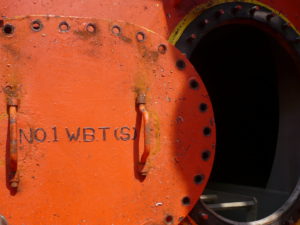The problem of the transfer of harmful aquatic organisms via ships ballast water treatment was first raised at IMO in 1988. The Marine Environmental Protection Committee focus on the development of a new Convention.
The International Convention for the control and management of ships ballast water and sediments (BWM) was adopted on 13 February 2004. The related condition of BWM Convention was met on 8 September 2016 and will enter into force on 8 September 2017.
By the effective date, all ships of 400 gross tonnage and above to which the BWM Convention applies are required to possess International Ballast Water Management Certificate.
The BWM Convention introduces two standards for the handling of discharged ballast water: the D-1 standard covering ballast water exchange and D-2 covering ballast water treatment. Compliance with either the D-1 or the D-2 standard is required.

The below documents should be kept on board both in ships applied with Regulation D-2 (ballast water performance standard) and Regulation D-1 (ballast water treatment standard):
– International Ballast Water Management Certificate
– Approved Ballast Water Management Plan
– Ballast Water Record Book
All ships over 400 gross tonnage should be surveyed and Ballast Water Management Certificate should be issued. The Ballast Water Management Certificate is valid for 5 years subject to annual and intermediate surveys. Vessels registered with a flag administration that is not yet a party to the BWM Convention should demonstrate compliance and a ‘document of compliance’ should be issued.
Ships officers and crew should ensure prior to undertaking ballast water exchange that all the safety aspects associated with the ballast water exchange method or methods used on board have been considered. More specifically, ships officers and crew should be suitably trained and familiarized with ship’s ballast pumping and piping arrangements, positions of associated air and sounding pipes, positions of all compartment and tank suctions and pipelines connecting them to ship’s ballast pumps, etc.
For ships engaged in the U.S. waters must comply with the requirements of 33 CFR 151 and the installation of the Ballast Water Management System should be approved by United States Coast Guard (USCG).
Source: MEPC.287(71), MEPC.288(71), MEPC.289(71)
Contact us to receive a professional advisory in your area of interest.
